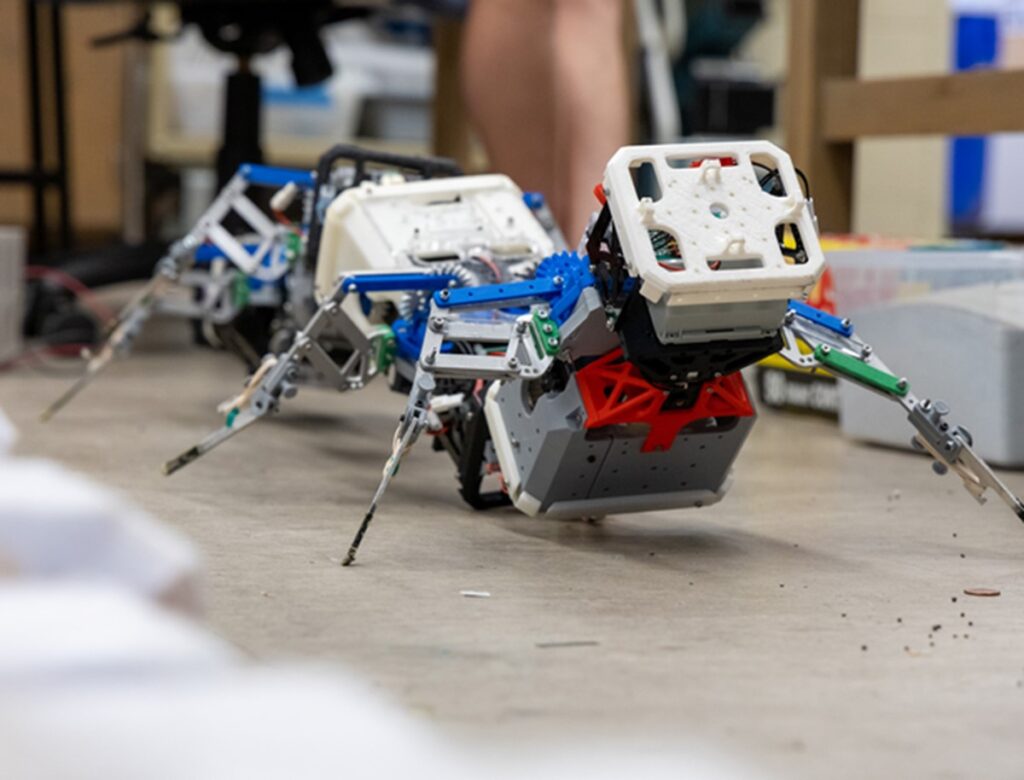In robotics, innovation often takes a leaf out of nature’s book. This time, the humble centipede has caught the attention of engineers at the Georgia Institute of Technology.
While the thought of a multilegged creature might make some people squeamish, researchers at the Georgia Institute of Technology have harnessed the creature’s natural talent for traversing complex terrains to create a new breed of robots.
Despite their miniature size, Centipedes move with extraordinary agility across an array of terrains. They seamlessly navigate through grass blades, over pebbles, and across bumpy, uneven surfaces. The secret to their movement success lies in their abundance of legs. This world is where movement is not dominated by inertia, as in our bipedal world, but rather by a constant wiggle of body parts and limbs.
The Georgia Tech team, led by researcher Daniel Goldman, wondered if this many-legged approach could be the key to creating robots traversing challenging terrains without complex sensing technology. They embarked on a project to develop a series of robots, each with a different number of legs, to see how they fared on various surfaces. The mission was simple: more legs, fewer complications.
The Beauty of Redundancy
The concept of redundancy is often associated with unnecessary repetition or waste. But in robotics, redundancy, particularly regarding legs, proves to be an asset. The Georgia Tech team coined “spatial redundancy” to encapsulate the idea that having more legs enhances the robot’s capacity to move over challenging surfaces, even without the need for sensors or control technology.

The fascinating aspect of this spatial redundancy is that the robot’s legs are successful independently. They don’t need external sensors to interpret the environment. If one leg falters or encounters difficulty, other portions keep the robot moving.
This strategy offers a robust and reliable method for a robot to transport itself (and even a load) from point A to point B on challenging or “noisy” landscapes. It’s like having a team where, if one player is struggling, the others step up to ensure the mission is accomplished.
What’s more, this approach offers significant practical advantages. Deploying sensors on robots can be expensive and fragile, and specific environments may change so rapidly that there needs to be more response time for a sensor-controller system. Thus, a centipede-inspired robot offers an innovative solution for applications where sensor use is limited, such as search and rescue missions, space exploration, or even agricultural tasks.
The More Legs, The More Wins
To put their theory to the test, the researchers embarked on a series of trials with robots sporting different numbers of legs. They started with six and gradually expanded to sixteen. Like a high-stakes robot Olympics, they assessed each contender’s performance on artificial terrains designed to mimic natural environments.
They discovered that as the leg count increased, so did the robot’s agility across the terrain. Robots with 14 and 16 legs traversed the obstacle courses faster and more consistently than their fewer-legged counterparts. Even without sensors, the robots adapted to the terrain, confirming the team’s theory.
The researchers even spun their many-legged prototypes in real-world conditions with impressive results. The robots could traverse various environments, demonstrating their potential for practical use in the future.
The next leg of the journey?
Now, the team is focused on refining their robotic centipedes and figuring out the optimal number of legs needed for efficient, cost-effective movement.
They are already applying their discoveries to real-world problems, including agricultural ones.
A company co-founded by Goldman aims to deploy these many-legged robots to tackle weed infestations on farmlands where traditional weedkillers fall short. Imagine the same principle that powers your indoor Roomba could be used outdoors to combat pesky weeds.
However, these robots would deftly navigate uneven farmlands instead of smoothly gliding on flat surfaces. But, unlike a Roomba, there’s no need for a smooth path – these innovative robots can handle the rough and tumble of the great outdoors.
Despite the successes, the researchers acknowledge there’s still much to learn. For instance, they have yet to pinpoint the minimum number of legs required for a robot to efficiently traverse various terrains. They also want to understand the trade-off between energy, speed, power, and robustness in such a complex system.
The shift to multilegged robots may seem odd in a world where bipedal and quadrupedal robots have long been the norm. But, as we’ve seen with the Georgia Tech team’s centipede-inspired robots, it’s a shift that could open up new avenues in robotics and offer solutions to some of the trickiest terrain-related problems.
As research continues and these centipede-inspired robots are further refined and developed, who knows what other applications may be discovered? From aiding in disaster relief to exploring alien terrains on other planets, the possibilities seem as limitless as the number of legs on a centipede.
While there may still be a lot to learn, one thing is clear: the team has taken one small multilegged step for robotkind and one giant leap into an exciting future.
TLDR
- Researchers at the Georgia Institute of Technology have created robots inspired by centipedes to navigate complex terrains.
- Centipedes’ ability to move agilely across different surfaces is attributed to their abundance of legs.
- The Georgia Tech team developed robots with varying numbers of legs to test their performance on different terrains.
- The concept of spatial redundancy was employed, where the robot’s legs can function independently without external sensors.
- Robots with more legs demonstrated greater agility and adaptability on artificial and real-world terrains.
- The centipede-inspired robots have potential applications in search and rescue missions, space exploration, agriculture, and more.
- The researchers are refining the robots and determining the optimal number of legs for efficient movement.
- The robots are being considered for agricultural use, such as combating weed infestations on farmlands.
- The researchers aim to understand the trade-off between energy, speed, power, and robustness in these complex systems.
- The shift towards multilegged robots offers new possibilities and solutions for challenging terrains.
- Further research and development may uncover additional applications for these centipede-inspired robots.








